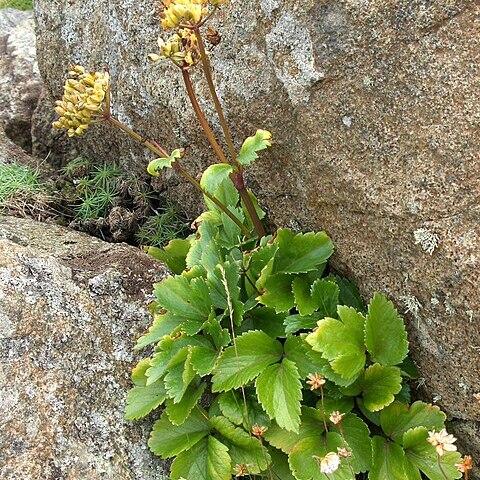A plant which keeps growing from year to year. It grows 1 m tall. It spreads 1 m wide. The stem is erect and grooved. It has a few branches. The leaves are arranged in threes. They are glossy dark green. The flowers are white and pink. They are in umbels at the ends of branches.


